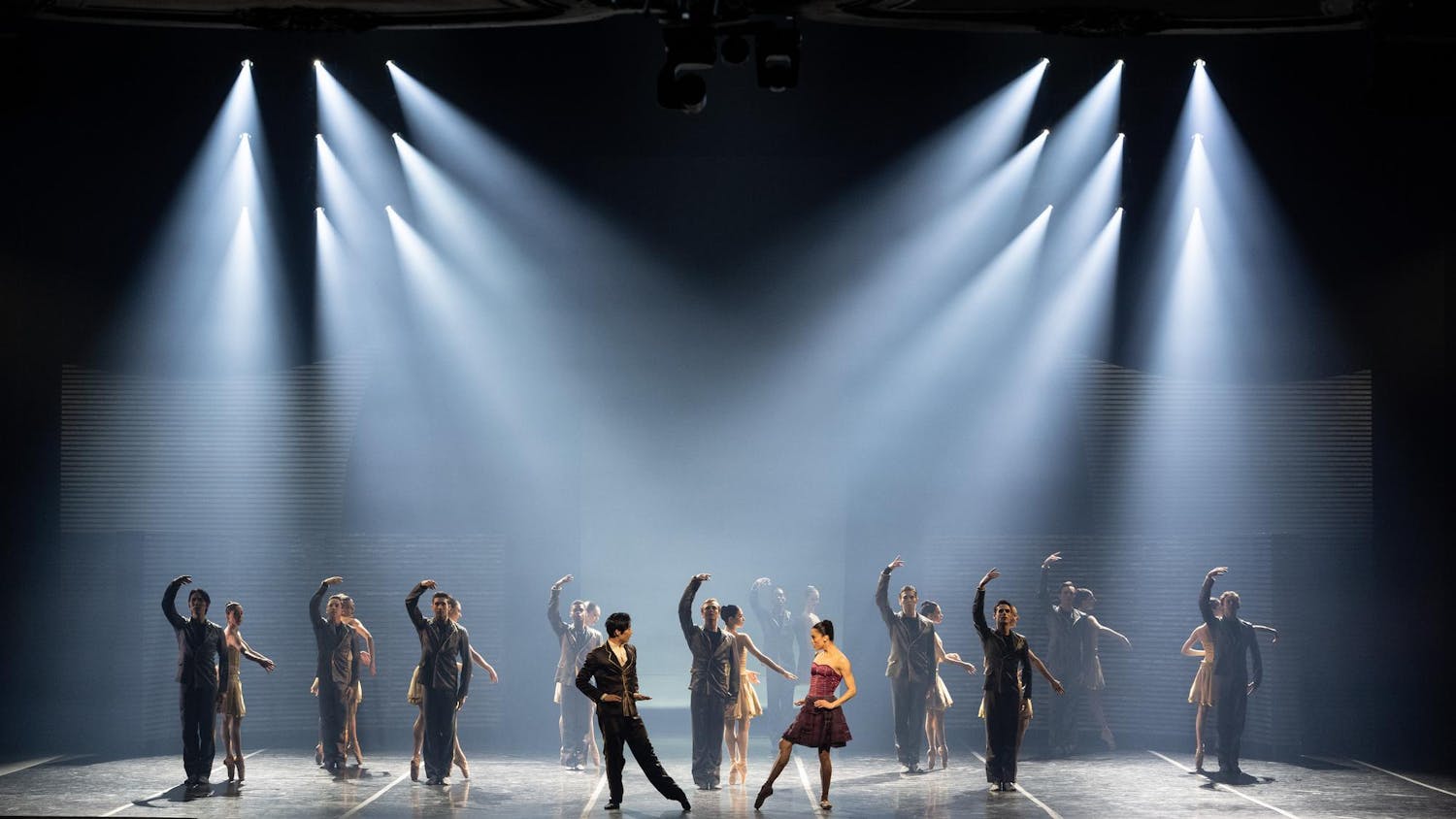"The Children’s Hour," a 1934 stage play written by Lillian Hellman, opened at the Balch Arena Theater at Tufts this weekend. The show is set largely at a fictional boarding school run by two young women and close friends, Karen Wright (Grace Whittom) and Martha Dobie (Kristin Reeves), who must deal with a disgruntled student, Mary Tilford (Anna Bornick), spreading rumors that the two are having a lesbian affair. Mary lies to her grandmother, Amelia (Pinar Yasar), and blackmails her classmates into supporting her claims, which leads to extreme social repercussions for Martha, Karen and Karen’s fiance, Joe (Ben Fuligni). The show portrays serious subject matter and comes with a trigger warning for homophobia and suicide.
In many ways, the play is unusual for what it is. Written in a time when any mention of homosexuality was banned from the Broadway stage, the play gained such popular and critical acclaim when it was first performed that objections were ignored so that it could continue. Visually, the set is somewhat sparse, with few changes; the play takes place entirely at the boarding school and Amelia’s home, two locations that are aesthetically quite similar. This setting, however, fits the nature of the show and the structure of Balch Arena, and the audience gets a complete, vibrant view of the characters even in limited dramatic space. The costuming is also aesthetically pleasant, creating a visually interesting picture that complements the set. Together, the set and costumes provide an engaging backdrop for the tumultuous tangle of falsehood, slander and questionable intentions that color the play.
The show is wisely split into three acts with two brief intermissions. While the first act gets off to a slow start, pacing and emotional intensity pick up in the second and third acts, in which there is little room for lightness or humor. However, this slow build works in the context of "The Children's Hour." The characters are portrayed with enough depth and complexity early on that the audience becomes invested in their stories.
The first act, in fact, contains most of the actual story development; many of the plot points that are discussed for the rest of the play happen in this section. Additionally, much of the "action" of the play -- the court case to determine Karen's and Martha's guilt, for example -- happens offstage, underscoring the premise that the play is really about the characters' reactions to unfolding events, and not about the actual events themselves.
The second and third acts map how the men and women of "The Children's Hour" deal with fear and guilt, requiring the actors to give a convincing portrayal of characters who never quite mean what they say. The quality of the acting is consistent across the cast in every scene of the play. Notable performances include Bortnick's role as the somewhat shrieky, manipulative Mary and Yasar's portrayal of grandmother Amelia, characters which are simultaneously unlikeable and painfully understandable. Yasar’s portrayal of the old woman is incredibly convincing and recognizable, and Mary’s energetic physical humor provides some of the show’s few moments of comic relief, including her faked heart attack near the beginning of the story. The other half of the show’s comic relief comes from Phoebe Cavise's performance as Lily Mortar, Martha’s freeloading, narcissistic thespian aunt. Additionally, the dynamic between Whittom and Reeves as Martha and Karen is interesting, though sometimes too awkward; one can believe that their relationship is a one-sided love affair, but not necessarily a friendship.
In many ways, the play is emotionally unsatisfying. Wronged characters do not get retribution and wrongdoers do not receive consequences. While "The Children's Hour" was never going to be a show with a happy ending, the play works well as an exploration of human character. Though the story is clearly dated -- in the world of the play there are bus rides that cost a nickel, telegrams and apron-clad maids -- and the content is much less controversial now than when it was first performed, it retains the edge and freshness that likely made it appear on Broadway in the first place. Hellman's elegant, if slow-paced, script is in good hands with 3Ps, and the performance certainly deserved the enthusiastic applause it received at its conclusion.
'The Children's Hour' is sorrowful, but well-executed

11/12/14 – Medford/Somerville, MA – Wednesday night in Balch Arena Theater actors perform their dress rehearsal for the Children's House, a play directed by Tufts junior, Shelby Carpenter, on November 12th, 2014. (C) Nicholas Pfosi Photography
Summary
Hellman's elegant, if slow-paced, script is in good hands with 3Ps, and the performance certainly deserved the enthusiastic applause it received at the show’s conclusion.
4 Stars





